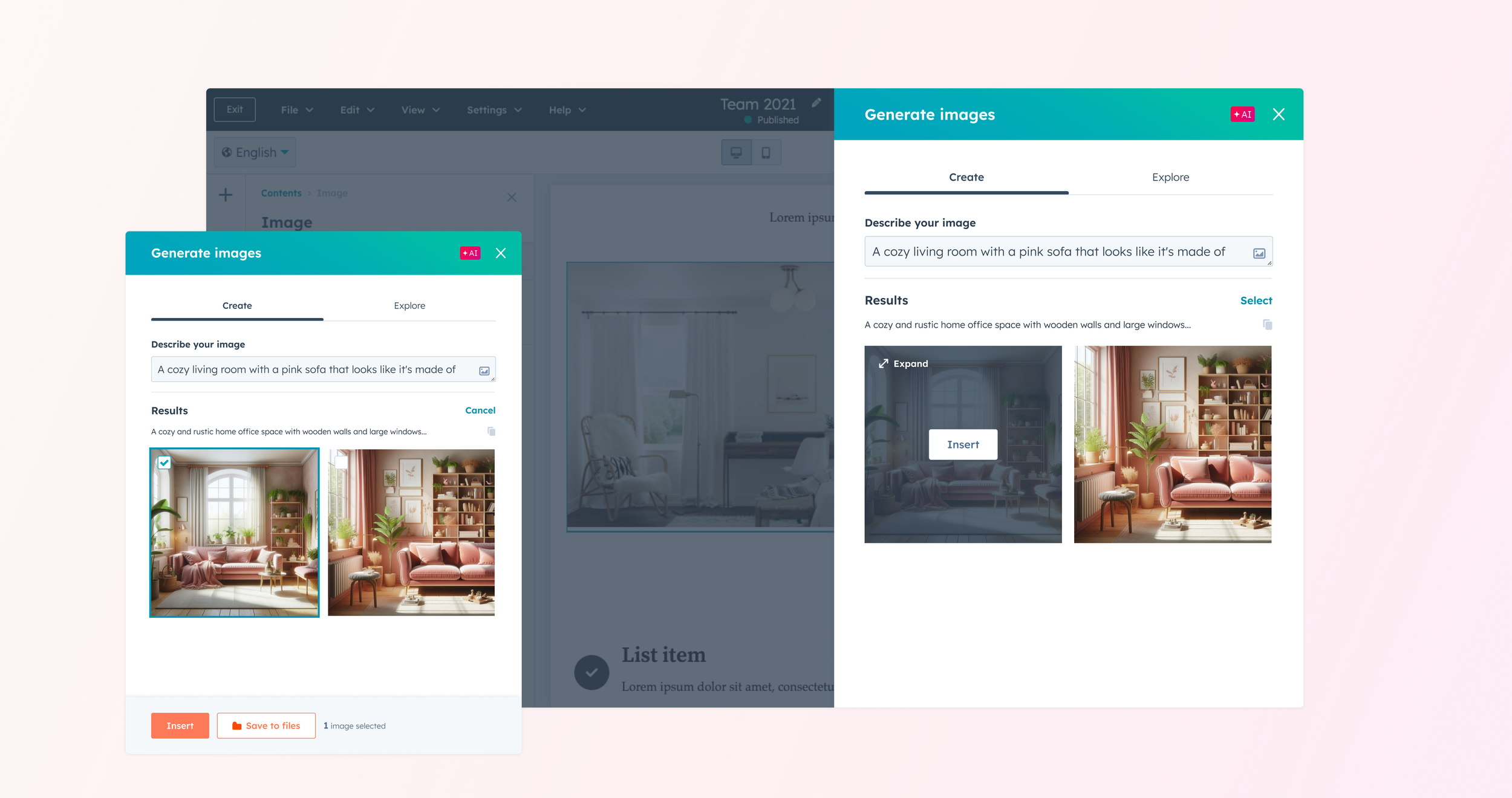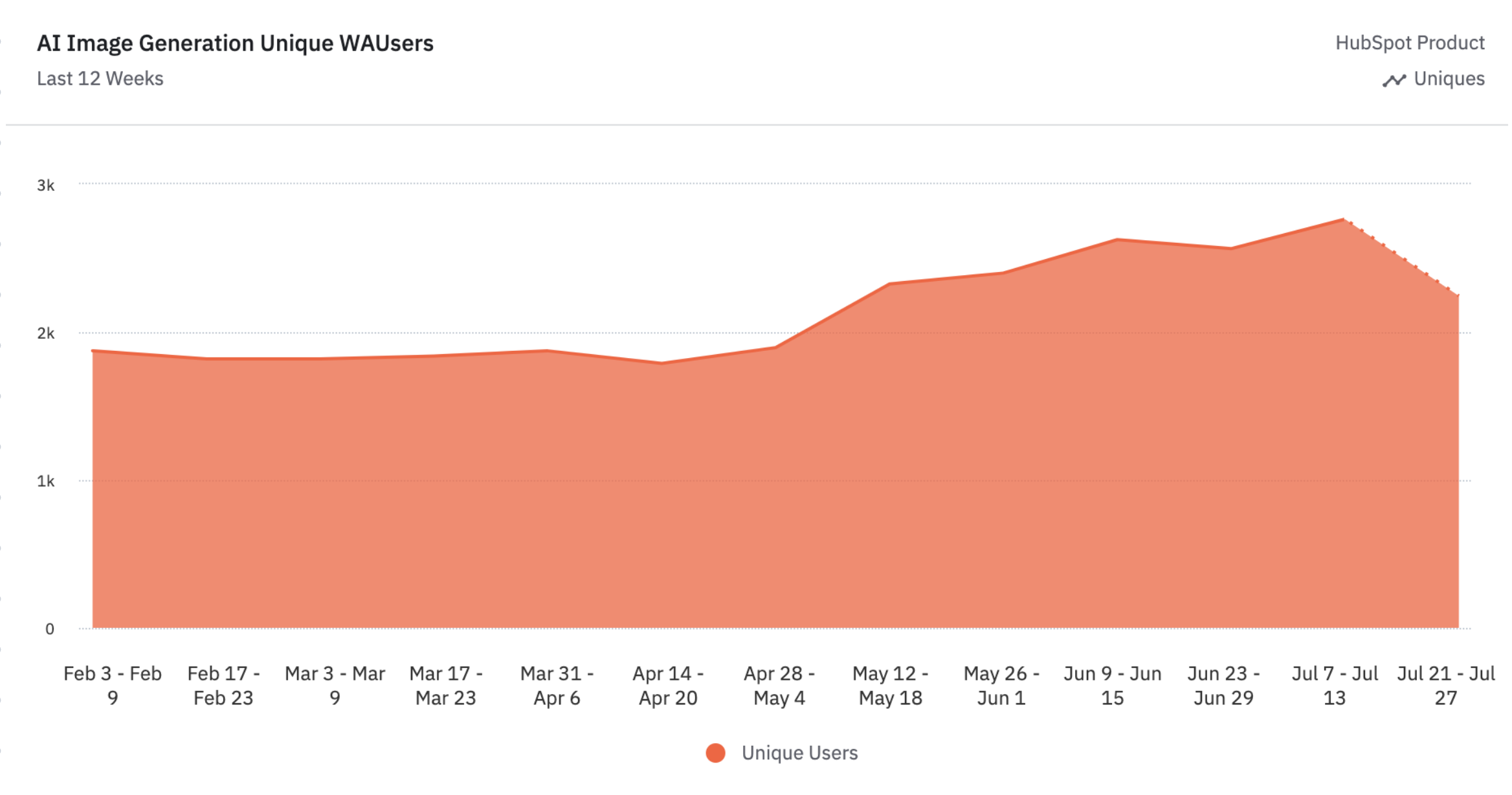Improving HubSpot’s AI Image Gen Experience, Leading to 69% WAU Growth
I led the end-to-end redesign of HubSpot’s AI Image Generator to transform it from a standalone experiment into a reliable, cross-platform creative tool. By focusing on quality, guidance, and seamless integration, we bridged the gap between user intent and AI output, increasing engagement, conversion, and trust in AI-generated media.
Role
Lead Product Designer
Timeline
3 months
Team
Product, Engineering lead, Cross-hub team
Before and After
The Situation
HubSpot’s first Image Gen release showed promise but lagged behind competitors. Customers expected fast, high-quality results; instead, they faced inconsistent images, disjointed workflows, and little guidance. This hurt the trust in the tool and blocked adoption across the Content Hub ecosystem.
What I discovered
Through a mix of customer interviews, a full product audit, Amplitude funnel analysis, and competitor research, I determined 4 key areas that could be improved for AI Image Generation:
Inconsistent quality: outputs often missed the mark, reducing trust and repeat use
Clunky flow: too many steps between generating, previewing, and inserting images
Lack of guidance: new users struggled to write effective prompts without support
Competitive gap: other tools set higher expectations for speed, polish, and usability
The challenge wasn’t to slap on more AI features; it was to make sure the system consistently produced valuable, high-quality results that could scale across HubSpot. The outcome had to work not just in Image Gen, but in other tools like Remix and Copilot chat.
HubSpot’s AI Image Audit
Strategy & Decisions
I led a cross-hub effort (Files, Remix, Copilot) to make AI image creation faster, smarter, and consistent with HubSpot’s visual ecosystem.
1. Model & Trust
Switched to a higher-performing model and built a transparent “Enhance Prompt” feature so users could see what AI was doing, reducing the black-box effect.
2. End-to-End Flow Simplification
Optimized the entire flow — generate → preview → insert: cutting redundant steps and allowing immediate previews.
3. Onboarding & Prompt Guidance
Introduced “Explore Gallery,” “Enhance Prompt,” and “Image-to-Prompt” to guide users toward effective results, especially first-timers.
4. System Integration
Aligned patterns with the File Picker and Remix so Image Gen could serve as the shared AI image engine across products.
Results
Business: Improved activation and retention by increasing customer confidence in AI outputs.
Platform: Established a unified experience reused by Copilot and Remix.
Customer: Faster, more predictable creative results that fit naturally into existing workflows.
Customer feedback
Key Learnings
Vendor decision: is not only a business one; the vendor we chose significantly influenced how customers perceived our tool, depending on quality and speed.
Expose what the "Enhance Prompt" feature is doing: reduce the AI "black box" effect and give users editable control
Consider the context: don’t just generate an image, add product thinking into what it’s generating for, what dimensions are needed, does it need a transparent background? Help the system work harder for the user.
Next Steps
Connect to Brand Identity: Auto-apply a company’s colors, fonts, and visual tone — every generated image starts “in-brand” by default.
Enable contextual generation: Use content context (e.g., blog vs. podcast vs. email) to influence composition, dimension, and style automatically.














